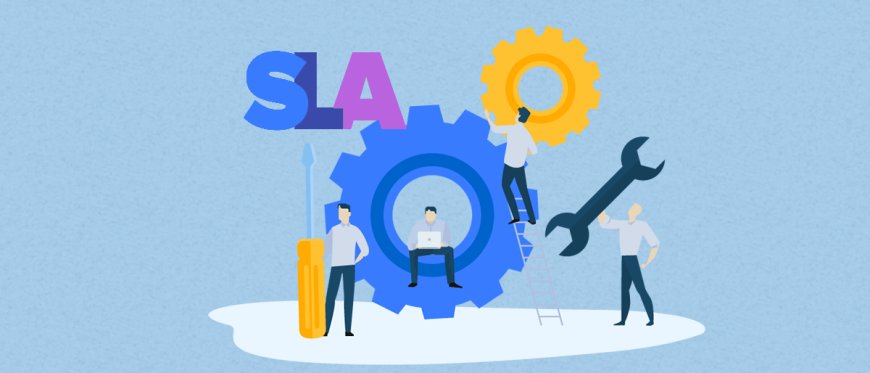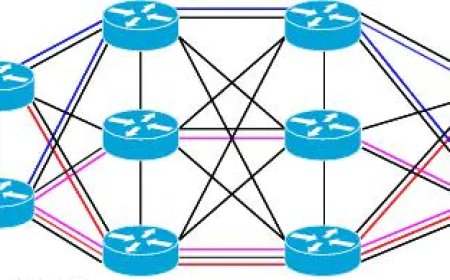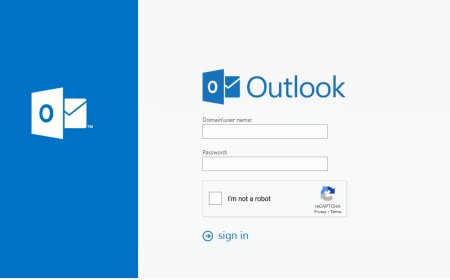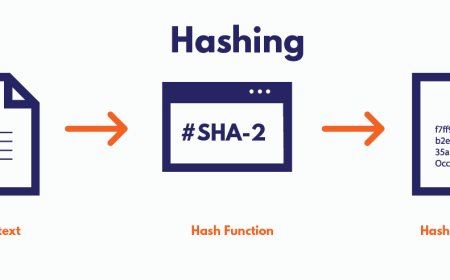Service Level Agreement (SLA) Explained
A Service Level Agreement, or SLA, is a contract between a service provider and a customer that defines the level of service that the provider will deliver. The agreement outlines the expectations and responsibilities of both parties, as well as any penalties that may be imposed if the service provider fails to meet the agreed-upon service levels. In this response, we will provide a detailed definition of SLA, including its purpose, key elements, benefits, and limitations.

PURPOSE OF AN SLA
The main purpose of an SLA is to establish clear expectations and define the level of service that a service provider will deliver to its customers. An SLA is a contract between the provider and the customer that outlines the services to be provided, the service levels that will be delivered, the metrics that will be used to measure performance, the responsibilities of both parties, and any penalties for failing to meet the agreed-upon service levels. The primary purpose of an SLA is to ensure that the service provider meets the customer's needs and expectations.
An SLA provides several benefits, including improved communication and accountability, increased customer satisfaction, and reduced risk for both the service provider and the customer. By establishing clear expectations and metrics, both parties can ensure that the service is delivered in a timely and efficient manner. An SLA also helps to establish a framework for resolving disputes and managing issues that may arise during the service delivery process.
In addition, an SLA can help to improve the service provider's performance by establishing specific performance targets and metrics. It also helps to prioritize the provider's efforts, allocate resources effectively, and improve the provider's overall service delivery.
Overall, the purpose of an SLA is to establish a clear understanding between the service provider and its customers about the services to be provided, the levels of service to be delivered, and the expected outcomes. It provides a framework for ensuring that the provider meets the customer's needs and expectations, while also establishing a basis for ongoing communication, monitoring, and improvement.
KEY ELEMENTS
-
Services to be provided: Needs to clearly define the services that the provider will deliver to the customer. This can include software, hardware, support, maintenance, training, and other related services.
-
Service levels: SLA should define the specific service levels that the provider will deliver, such as uptime, response time, resolution time, and other key metrics.
-
Metrics: Metrics should be identified in the SLA which will be used to measure the provider's performance, such as the number of incidents, the duration of outages, and other relevant metrics.
-
Responsibilities: Responsibilities of both provider and the customer needs to be defined clearly. This can include tasks such as reporting incidents, providing access to systems and data, and managing customer expectations.
-
Penalties: SLA should outline the penalties that the provider will face if they fail to meet the agreed-upon service levels. Penalties can include financial penalties, service credits, or other types of remediation.
-
Reporting: Reporting requirements, including the frequency and format of reports that the provider will provide to the customer also needs to be covered in the SLA.
-
Escalation process: SLA also should outline the process for escalating issues to higher levels of management or support if the service levels are not met or if there are other issues that need to be addressed.
-
Review and revision process: Requirements and technologies change too fast. So, SLA should define how often the SLA will be reviewed and revised to ensure that it remains relevant and effective.
-
Termination: The SLA should outline the circumstances under which either party can terminate the agreement, such as a breach of contract or a change in business requirements.
-
Signatures: Both parties should sign SLA to indicate that they agree to the terms of the agreement and are committed to meeting the agreed-upon service levels.
TYPES
-
Service-based SLA: This type of SLA is used to define the service levels for a specific service or group of services. For example, an IT service provider may have a service-based SLA for its help desk service that defines the response time and resolution time for incidents.
-
Customer-based SLA: A customer-based SLA is used to define the service levels for a specific customer or group of customers. For example, a software vendor may have a customer-based SLA for its enterprise customers that includes specific uptime and availability guarantees.
-
Multi-level SLA: Used to define service levels for multiple layers of service delivery, such as an application service provider that uses a hosting provider and a network provider. Each provider would have its own SLA, and the multi-level SLA would define the service levels and responsibilities of each party.
-
Operational-level SLA: An operational-level SLA (OLSA) define service levels for internal support groups, such as a service desk or a network operations center. The OLSA ensures that internal support groups are meeting the needs of the business and delivering services in a consistent and efficient manner.
-
Vendor-based SLA: Vendor-based SLA is on the other hand used to define service levels for third-party vendors that provide services to the organization, such as a facilities management company that provides cleaning services. The vendor-based SLA ensures that the vendor is meeting the needs of the organization and delivering services in a consistent and efficient manner.
-
Outcomes-based SLA: An outcomes-based SLA is used to define the desired outcome or result of a service, rather than specific service levels. For example, an outcomes-based SLA for a marketing campaign may define the desired increase in website traffic or conversion rates, rather than specific service levels for the marketing services provided.
BENEFITS
An SLA provides a framework for establishing clear expectations and defining the level of service to be delivered. This can lead to improved communication, increased customer satisfaction, reduced risk, improved service quality, better resource allocation, and a clear escalation process for resolving issues. Here are some short definitions to these benefits.
-
Improved communication and accountability: Both the service provider and the customer know what to expect, which can reduce misunderstandings and disputes.
-
Increased customer satisfaction: An SLA helps to ensure that the services provided by the provider meet the needs and expectations of the customer. By defining the service levels, metrics, and responsibilities, the provider can ensure that the customer is satisfied with the service provided.
-
Reduced risk: The provider can allocate resources effectively and reduce the risk of service interruptions. The customer can also reduce the risk of poor service by selecting a provider with a well-defined SLA.
-
Improved service quality: The provider can focus on delivering high-quality services and improving service delivery over time.
-
Better resource allocation: The provider can prioritize its efforts and allocate its resources accordingly.
-
Clear escalation process: Both parties know how to handle issues that arise, which can reduce the risk of disputes and service interruptions.
LIMITATIONS
While an SLA can be a valuable tool for defining service levels and expectations, it is important to recognize its limitations and to balance the need for clear expectations with the need for flexibility and responsiveness to changing customer needs.
-
Limited scope: An SLA typically focuses on a specific set of services and may not cover all aspects of the relationship between the provider and the customer. Other important aspects, such as pricing and billing, may not be addressed in the SLA.
-
Lack of flexibility: An SLA is a formal agreement that outlines specific service levels and metrics. While this can be beneficial, it can also limit the provider's ability to be flexible and adapt to changing customer needs.
-
Unrealistic expectations: If the service levels and metrics defined in the SLA are too ambitious or unrealistic, the provider may struggle to meet them, which can lead to dissatisfaction and disputes with the customer.
-
Difficulty in enforcement: If the provider fails to meet the service levels and metrics defined in the SLA, it can be difficult to enforce the agreement and hold the provider accountable.
-
Overemphasis on metrics: An SLA that focuses too heavily on metrics can lead to a culture that prioritizes meeting those metrics over providing high-quality service. This can result in a focus on meeting targets rather than truly addressing customer needs.
-
Limited effectiveness in resolving disputes: While an SLA can provide a framework for resolving disputes, it may not be effective in all situations. In some cases, a dispute resolution process outside of the SLA may be necessary to reach a satisfactory resolution.
KEY METRICS
The key metrics in an SLA should be specific, measurable, and relevant to the needs of the customer. By defining the metrics, both the provider and the customer can have a clear understanding of what is expected and can work together to ensure that the service meets the required level of performance. Here are some common metrics in an SLA:
-
Uptime/downtime: Measures the amount of time a service is available (uptime) versus the amount of time it is not available (downtime). For example, an SLA may require a provider to maintain a certain level of uptime (e.g., 99.9%) over a given time period.
-
Response time: This metric measures the time it takes for the provider to respond to a request from the customer. For example, an SLA may require the provider to respond to a support request within a certain time frame (e.g., within one hour).
-
Resolution time: Measures the time it takes for the provider to resolve an issue or incident. For example, an SLA may require the provider to resolve a critical issue within a certain time frame (e.g., within four hours).
-
Capacity: Basically it refers to the amount of capacity or resources that the provider has available to meet the needs of the customer. For example, an SLA may require the provider to have sufficient capacity to handle a certain number of requests or users.
-
Performance: Measures the overall performance of the service, such as speed, accuracy, and reliability. For example, an SLA may require the provider to maintain a certain level of performance for a particular application or service.
-
Security: Measures the security and privacy of the service and the data that is being processed or stored. For example, an SLA may require the provider to maintain certain security controls and comply with specific security standards.
BEST PRACTICES
By following best practices, it is not that hard to create a well-designed and effective SLA that meets the needs of both the provider and the customer, and helps to ensure the delivery of quality services.
-
Define the objectives and scope: Start by defining the objectives and scope of the SLA. This will help to ensure that everyone understands what the SLA is intended to achieve and what services are included.
-
Understand the business needs: It is important to understand the business needs of the customer in order to define relevant service level targets and metrics.
-
Involve all stakeholders: Involve all stakeholders in the development process to ensure that everyone's needs and expectations are taken into account. This can include representatives from IT, the business, legal, and procurement.
-
Define clear and measurable SLTs: Define clear and measurable Service Level Targets (SLTs) that are specific, measurable, achievable, relevant, and time-bound. This will help to ensure that the SLA is enforceable and that everyone knows what to expect.
-
Consider the risks: Identify and assess the risks associated with the service and define appropriate measures to mitigate those risks.
-
Define the roles and responsibilities: Clearly define the roles and responsibilities of both the provider and the customer, including any escalation procedures and communication channels.
-
Include service level reporting: Include provisions for regular reporting on service level performance, including any key performance indicators (KPIs).
-
Review and update regularly: Review and update the SLA regularly to ensure that it remains relevant and effective.
-
Get legal advice: Seek legal advice when developing an SLA to ensure that it is legally binding and enforceable.
-
Consider the customer's perspective: Ensure that the SLA is written from the perspective of the customer, and is designed to meet their needs and expectations.
Check out the following link to create a template for your SLA:
Service Level Agreement (SLA) Examples and Template – BMC Software | Blogs
What's Your Reaction?

























